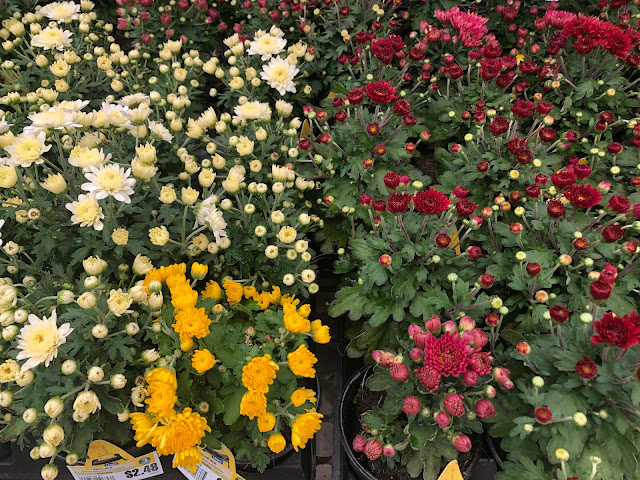
Cooling trend makes for perfect planting time

|
| It's the season for mums! They're an easy way to add fall color to your garden. (Photo: Kathy Morrison) |
Say hello to the 80s! After a last blast of heat on Saturday, Sacramento is expected to see 80s (or lower) the rest of the week.
According to the National Weather Service, our first full week of fall will see a distinct cooling trend, starting Sunday and lasting at least a week. The forecast high for Tuesday is only 76 degrees – 20 degrees cooler than Friday. That’s followed by several days in the low 80s with relatively warm overnight lows in the 50s.
There’s even a slight chance of rain Monday night. If no measurable precipitation is recorded by midnight Wednesday, Downtown Sacramento will break its record for longest rainless spell of 194 days, set back in 1880.
Meanwhile, this weather reminds us: Fall is for planting. Make the most of this opportunity.
* Plant onions, lettuce, peas, radishes, turnips, beets, carrots, bok choy, spinach and potatoes directly into the vegetable beds.
* Transplant cabbage, broccoli, kale, Brussels sprouts and cauliflower as well as lettuce seedlings.
* Sow seeds of California poppies, clarkia and African daisies.
* Transplant cool-weather annuals such as pansies, violas, fairy primroses, calendulas, stocks and snapdragons. Freshen up containers with some new chrysanthemums.
* Late September is ideal for sowing a new lawn or re-seeding bare spots. Consider low-mow or no-mow turf.
* Divide and replant bulbs, rhizomes and perennials.
* Dig up and divide daylilies as they complete their bloom cycle.
* Divide and transplant peonies that have become overcrowded. Replant with “eyes” about an inch below the soil surface.
Comments
0 comments have been posted.Sacramento Digs Gardening to your inbox.
Sites We Like
Garden Checklist for week of July 21
Your garden needs you!
* Keep your vegetable garden watered, mulched and weeded. Water before 8 a.m. to reduce the chance of fungal infection and to conserve moisture.
* Feed vegetable plants bone meal, rock phosphate or other fertilizers high in phosphate to stimulate more blooms and fruiting. (But wait until daily high temperatures drop out of the 100s.)
* Don’t let tomatoes wilt or dry out completely. Give tomatoes a deep watering two to three times a week.
* Harvest vegetables promptly to encourage plants to produce more. Squash especially tends to grow rapidly in hot weather. Keep an eye on zucchini.
* Pinch back chrysanthemums for bushy plants and more flowers in September.
* Remove spent flowers from roses, daylilies and other bloomers as they finish flowering.
* Pinch off blooms from basil so the plant will grow more leaves.
* Cut back lavender after flowering to promote a second bloom.
* It's not too late to add a splash of color. Plant petunias, snapdragons, zinnias and marigolds.
* From seed, plant corn, pumpkins, radishes, winter squash and sunflowers.